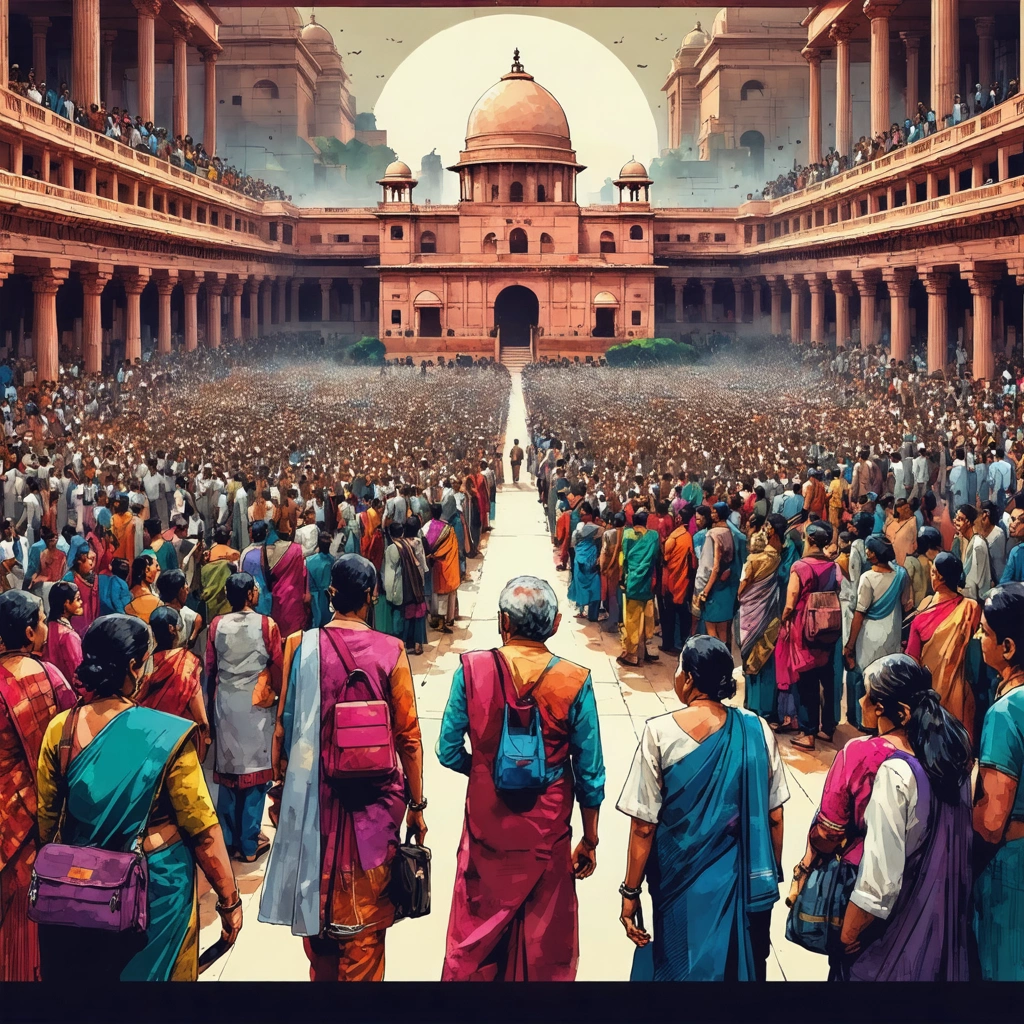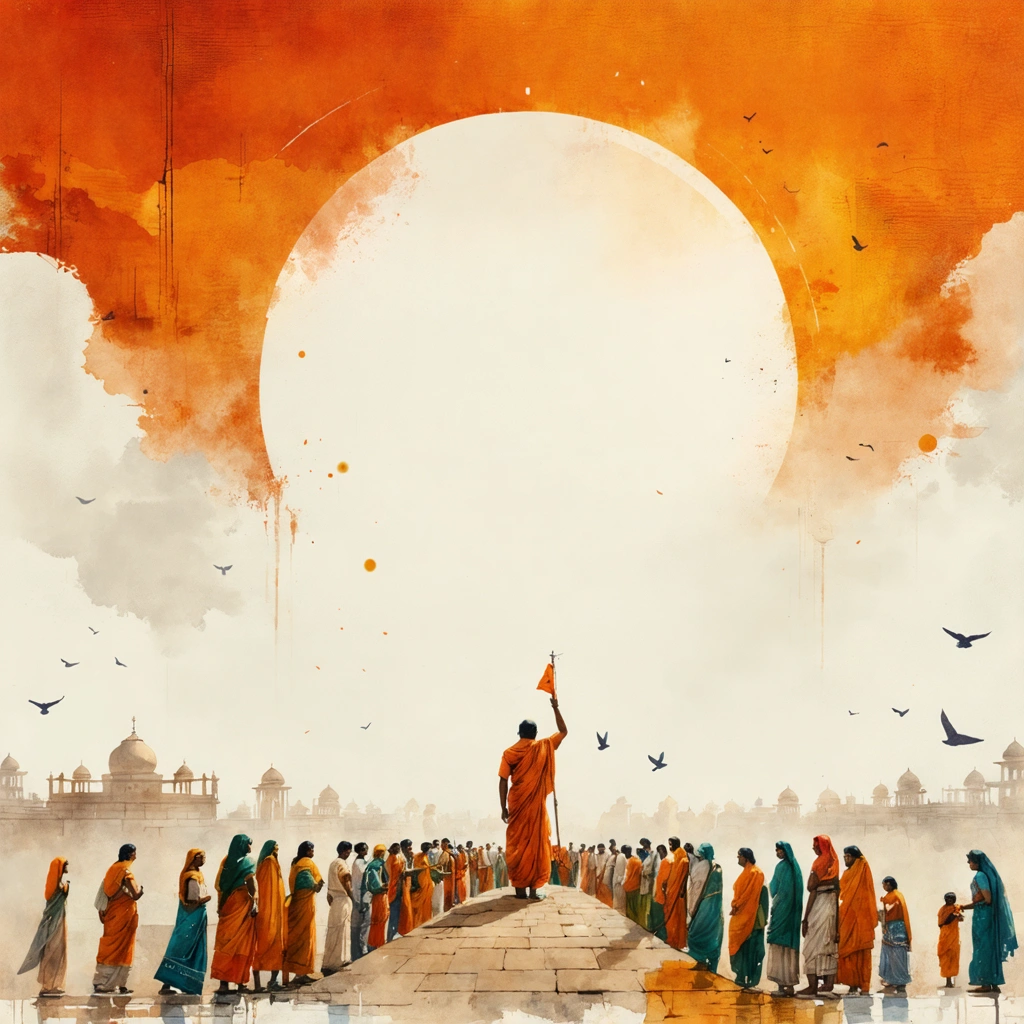Electoral Systems’ Evolution: Explore the evolution of India’s electoral systems in 2025.

Tracing the Pulse of Democracy: Why India’s Electoral Framework Needs a Fresh Look
Imagine standing at the crossroads of a bustling democracy with over a billion voices clamoring to be heard. India’s electoral system—its backbone—has long been a marvel of inclusivity and scale. Yet, as the nation strides confidently into 2025, the question looms larger than ever: Is the current system truly equipped to represent the aspirations of Bharat’s diverse population? The institution at the heart of this democratic machinery, the Bharat Ka Nirvachan Aayog, has been the guardian of free and fair elections for decades. But with rapid technological, social, and political changes, even this stalwart institution faces unprecedented challenges.
Every election cycle unravels fresh debates. From allegations of misinformation to voter disenfranchisement, the mechanics of India’s elections are under sharp scrutiny. People ask, “Bharat Ke Chunav Sudhar Kya Hai?”—what exactly are the reforms in India’s electoral process? Moreover, there’s a growing curiosity about the role and vision of the individuals steering this ship, particularly Bharat Ke Mukhya Chunav Ayukt Kaun Hai—who is currently leading the charge at the Election Commission, and what new directions are they pushing?
When Tradition Meets Transformation: The Challenges Stirring Change
The Indian electoral system is a fascinating study of scale and complexity. Conducting elections for over 900 million eligible voters across varied geographies, languages, and cultures is no small feat. The Bharat Ka Nirvachan Aayog has traditionally ensured a transparent and efficient process, but it has had to constantly adapt to evolving challenges:
- Technological Disruptions: From electronic voting machines (EVMs) to biometric voter identification, technology has been a double-edged sword. While it promises accuracy and speed, it also raises concerns about security and accessibility.
- Voter Awareness and Participation: Despite efforts, voter turnout fluctuates dramatically. The question isn’t just about casting votes, but casting informed votes. Misinformation and political polarization add layers of complexity.
- Electoral Integrity: Allegations of malpractice, vote-buying, and undue influence persist, challenging the credibility of electoral outcomes.
These dynamics have prompted a re-examination of the electoral framework. Citizens, political analysts, and the election body alike are asking: How can the system evolve to meet 21st-century demands without losing the democratic ethos?
Understanding Bharat Ke Chunav Sudhar Kya Hai: The Road Ahead
Reform is not a buzzword—it’s an ongoing process. The answers to Bharat Ke Chunav Sudhar Kya Hai? lie in a blend of policy innovation, technological integration, and institutional strengthening. Recent years have seen several noteworthy initiatives:
- Enhanced Voter Education Programs: To tackle misinformation and boost turnout, tailored campaigns leveraging social media, local languages, and grassroots activists are being rolled out.
- Improved Transparency Measures: Real-time monitoring of election expenditures and candidate disclosures aim to reduce corruption and increase public trust.
- Advanced Security Protocols: Cybersecurity frameworks protecting EVMs and voter databases have been significantly upgraded, reflecting the digital age’s risks.
- Inclusive Voting Methods: Proposals for remote and postal voting options are gaining traction to include marginalized and migrant voters.
At the helm of these transformative efforts is the question of leadership. The identity and approach of the Bharat Ke Mukhya Chunav Ayukt Kaun Hai are central to understanding the pace and direction of reforms. The chief election commissioner’s vision often sets the tone for how effectively these changes translate on the ground.
Who is Steering the Ship? Bharat Ke Mukhya Chunav Ayukt Kaun Hai and Their Vision
In 2025, the role of the Chief Election Commissioner is more crucial than ever. The officeholder not only oversees the conduct of elections but also navigates the political and technological currents shaping the future. The current Bharat Ke Mukhya Chunav Ayukt is tasked with balancing innovation with tradition, ensuring the electoral process remains robust, transparent, and accessible.
Under their stewardship, initiatives such as digitization of electoral rolls, integration of artificial intelligence in voter verification, and proactive engagement with civil society demonstrate an adaptive strategy. It’s a leadership that embodies responsiveness and forward-thinking, essential qualities for managing the world’s largest democracy.
Looking Beyond the Horizon: What This Means for Every Indian
For the everyday citizen, these developments impact more than just the act of voting. They shape the very foundation of democratic participation and representation. As the electoral system evolves, Indian democracy stands at a pivotal juncture—one that promises to be more inclusive, secure, and reflective of the nation’s aspirations.
Through this article, you will embark on a comprehensive exploration of India’s electoral system’s evolution in 2025. We will delve deeper into the reforms introduced by the Bharat Ka Nirvachan Aayog, decode the critical question of Bharat Ke Chunav Sudhar Kya Hai, and spotlight the leadership and vision of the Bharat Ke Mukhya Chunav Ayukt. Together, we’ll unravel how these elements intertwine to forge the path forward for India’s democracy.
So, whether you are a student of political science, a concerned voter, a policy maker, or simply a curious observer, join us as we navigate the dynamic and fascinating journey of India’s electoral systems in 2025.

Electoral Systems’ Evolution: Explore the Evolution of India’s Electoral Systems in 2025
How has India’s electoral system evolved over time, and what changes are expected by 2025?
India's electoral system has undergone significant transformations since independence in 1947, reflecting the country's democratic aspirations and socio-political complexities. The foundation was laid with the establishment of the Bharat Ka Nirvachan Aayog (Election Commission of India), an autonomous constitutional authority responsible for administering elections at all levels — national, state, and local.
Over the decades, the system evolved to enhance transparency, inclusiveness, and efficiency. Key milestones include the introduction of electronic voting machines (EVMs) in the early 2000s and the expansion of voter awareness campaigns to increase participation. By 2025, India is expected to implement further reforms characterized by digitization, voter verifiable paper audit trails (VVPAT), and increased use of artificial intelligence to monitor electoral malpractices.
These changes aim to strengthen democratic processes by making elections more accessible and secure. The role of the Bharat Ka Nirvachan Aayog remains pivotal as it adapts to technological advancements and evolving political landscapes.
What are the recent electoral reforms in India, and what is Bharat Ke Chunav Sudhar Kya Hai?
The phrase Bharat Ke Chunav Sudhar Kya Hai translates to "What are the electoral reforms in India?" and encompasses a range of initiatives designed to improve the electoral process. Recent reforms focus on:
- Electoral Roll Accuracy: Continuous updating and digitization of voter lists to reduce errors and duplication.
- Enhancing Voter Participation: Simplification of voter registration processes, introduction of voter awareness drives, and enabling proxy voting for certain categories.
- Transparency Measures: Implementation of VVPAT systems alongside EVMs to verify votes and increase trust.
- Campaign Finance Reforms: Stricter regulations on political funding to curb black money and promote fair play.
- Use of Technology: Deployment of mobile apps for voter information, real-time monitoring of electoral activities, and AI-based detection of fake news and misinformation.
These reforms collectively represent the core of Bharat Ke Chunav Sudhar Kya Hai, aiming to create a more transparent, efficient, and inclusive electoral process that resonates with the democratic ethos of India.
Who is the current chief election commissioner, and what role does Bharat Ke Mukhya Chunav Ayukt Kaun Hai play in the electoral system?
The term Bharat Ke Mukhya Chunav Ayukt Kaun Hai means "Who is the chief election commissioner of India?" As of 2025, the Chief Election Commissioner (CEC) is the highest authority in the Bharat Ka Nirvachan Aayog. The CEC's role is critical in maintaining the integrity and fairness of elections across the country.
The Chief Election Commissioner is responsible for:
- Overseeing the preparation and revision of electoral rolls.
- Ensuring free and fair conduct of elections to the Lok Sabha, Rajya Sabha, and state legislatures.
- Implementing electoral reforms and monitoring compliance with the Model Code of Conduct.
- Addressing complaints and disputes related to elections.
- Collaborating with state election commissions and other stakeholders to streamline election management.
The appointment of the CEC is made by the President of India, and the office is designed to function independently to safeguard democratic principles. The identity of the current CEC can be found on the official Bharat Ka Nirvachan Aayog website, as it may change due to term limits or new appointments.
Why is understanding the evolution of India’s electoral system important for voters and policymakers?
Understanding the evolution of India’s electoral system helps voters appreciate the mechanisms that protect their voting rights and democracy itself. It fosters informed participation, encouraging citizens to engage actively in the democratic process.
For policymakers, knowledge of past reforms and upcoming changes aids in designing better electoral policies that address contemporary challenges such as misinformation, electoral fraud, and voter apathy. It also helps in benchmarking progress and identifying areas where further improvements are necessary.
In summary, the continual evolution of India's electoral system, guided by the Bharat Ka Nirvachan Aayog and influenced by reforms encapsulated in Bharat Ke Chunav Sudhar Kya Hai, ensures that the democratic process remains robust and reflective of the people's will.



